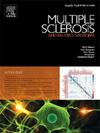Longitudinally extensive transverse myelitis: Impact on functional prognosis and mortality in a 10-year follow-up cohort
IF 2.9
3区 医学
Q2 CLINICAL NEUROLOGY
引用次数: 0
Abstract
Background: Neuromyelitis optica spectrum disorder (NMOSD) with positivity for aquaporin-4 antibody (AQP4-IgG) represents one of the mains etiologies of longitudinally extensive transverse myelitis (LETM). Advancements in early diagnosis and treatment have led to a decline in NMOSD-related mortality. However, long-term prognostic data for patients experiencing their first episode of LETM remain scarce, especially in Brazil. This study aims to evaluate the final diagnosis and long-term prognosis of patients with first episode of LETM and investigate factors associated with worse prognosis. Methods: This is an observational retrospective study involving all consecutive patients diagnosed with longitudinally extensive myelopathy who were sequentially referred to the clinical neurology department of a brazilian tertiary hospital between January 2005 and December 2011. Only patients meeting the criteria for the first episode of idiopathic LETM were included. Data were retrieved from electronic medical records from October 2023 to January 2024. Results: 39 patients met the inclusion criteria. After a median follow-up of 12 years, 51% patients remained with isolated monophasic seronegative LETM, 28% were diagnosed with NMOSD AQP4-IgG positive, 7.7% with NMOSD AQP4-IgG negative, 5% with MOGAD, 5% experienced recurrent seronegative LETM, and only 1 (2.6%) developed multiple sclerosis. The mortality rate was 10% at last follow-up, with a median time to death of 3 years. Deceased patients had a higher age at onset of LETM (OR 1.09, 95% CI 1.01–1.21). Among survivors, 17% had an Expanded Disability Status Scale (EDSS) ≥7 at last follow-up. Predictors of severe sequelae included higher EDSS at nadir (OR 5.29; 95% CI 1.38–39), pain as an initial myelitis symptom (OR 11.1; 95% CI 1.51–230) and spinal shock during the first myelitis (p < 0.001). Conclusion: In this cohort, after a median 12-year follow-up, half of the patients remained as isolated monophasic seronegative LETM, mortality reached 10% and 83% of survivors were ambulatory. Predictors of poor prognosis included older age, presence of pain as an initial symptom and higher initial severity.
求助全文
约1分钟内获得全文
求助全文
来源期刊

Multiple sclerosis and related disorders
CLINICAL NEUROLOGY-
CiteScore
5.80
自引率
20.00%
发文量
814
审稿时长
66 days
期刊介绍:
Multiple Sclerosis is an area of ever expanding research and escalating publications. Multiple Sclerosis and Related Disorders is a wide ranging international journal supported by key researchers from all neuroscience domains that focus on MS and associated disease of the central nervous system. The primary aim of this new journal is the rapid publication of high quality original research in the field. Important secondary aims will be timely updates and editorials on important scientific and clinical care advances, controversies in the field, and invited opinion articles from current thought leaders on topical issues. One section of the journal will focus on teaching, written to enhance the practice of community and academic neurologists involved in the care of MS patients. Summaries of key articles written for a lay audience will be provided as an on-line resource.
A team of four chief editors is supported by leading section editors who will commission and appraise original and review articles concerning: clinical neurology, neuroimaging, neuropathology, neuroepidemiology, therapeutics, genetics / transcriptomics, experimental models, neuroimmunology, biomarkers, neuropsychology, neurorehabilitation, measurement scales, teaching, neuroethics and lay communication.
 求助内容:
求助内容: 应助结果提醒方式:
应助结果提醒方式:


